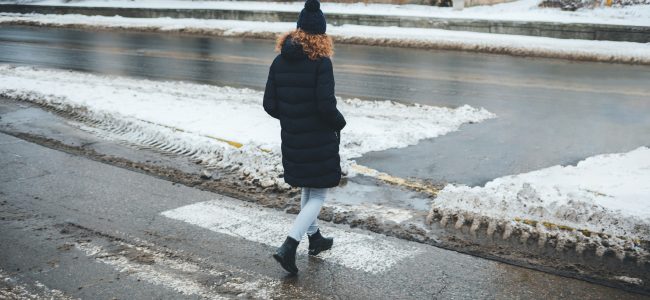BlogLine
Slippery Conditions in Pennsylvania Defense Slip and Fall Negligence Case
9/27/23

By: Nicholas Hubner
In a recent ruling this month, the Superior Court of Pennsylvania affirmed summary judgment in favor of the defense in a slip and fall case involving “generally slippery” conditions. Plaintiff filed suit against the defendant property owner and claimed she slipped and fell because of an unsafe ‘accumulation of ice and snow in the parking lot.’” Grace v. Graystone Court Villas LLC, No. 1208 WDA 2022, 2023 WL 5950946. The claimed damages included ankle fracture, muscle spasms, deltoid ligament damage, contusions, and emotional injuries.
The trial court ruled Plaintiff was a business invitee at the time of her fall, and that “Graystone was responsible for exercising reasonable care in maintaining the property,” but ultimately “generally slippery conditions existed at the time” of the fall and therefore the “hills and ridges doctrine” applies and precludes the instant liability action against defendant.
On appeal, Grace attempted to argue the ice was actually a “localized condition” because the area where the slip and fall occurred was “an isolated patch of ice that was located behind her vehicle” instead of a generally slippery condition, and because Grayson “negligently allowed ice to accumulate in a particular spot of the parking lot of the premises” that the patch of ice was not “entirely natural, but, rather, due to the plowing and salting that occurred around.
The court examined general negligence principles and specifically, to recover following a fall on a snow or ice-covered surface, a plaintiff must demonstrate: (1) that snow and ice had accumulated on the sidewalk in ridges or elevations of such size and character as to unreasonably obstruct travel and constitute a danger to pedestrians travelling thereon; (2) that the property owner had notice, either actual or constructive, of the existence of such condition; (3) that it was the dangerous accumulation of snow and ice which caused the plaintiff to fall.
However in Grace’s deposition testimony, Grace stated just before she left home again to travel to the property, the weather changed, such that her own sidewalk was slippery, she had to scrape ice off her car, and the weather conditions at that time included “freezing rain and snow.”
The appeal was denied on the hill and ridges doctrine. The court found it was undisputed that freezing precipitation was actively falling at the time of the Plaintiff’s incident, it had started shortly beforehand, Plaintiff was aware of the conditions because she scraped ice off her car and took care while she walked on her sidewalk. The court ruled that the only duty upon the property owner or tenant is to act within a reasonable time after notice to remove the snow and ice when it is in a dangerous condition.
This decision is a good reminder that a property owner, or person in possession, may contest liability for a slip and fall due to snow and ice conditions. In doing so, it is critical to examine the circumstances at the time of the fall, and to establish that a generally icy condition existed, through testimony or otherwise, as opposed to localized patch of ice or snow.
The attorneys at Freeman Mathis & Gary are highly skilled at defending slip and fall claims, especially in the snow and ice context. FMG Attorneys Joshua G. Ferguson and Nicholas J. Hubner may be contacted further for any questions or comment.
Share
Save Print